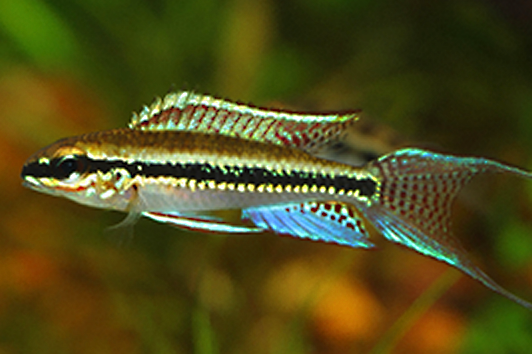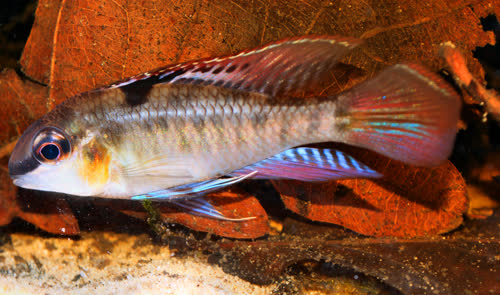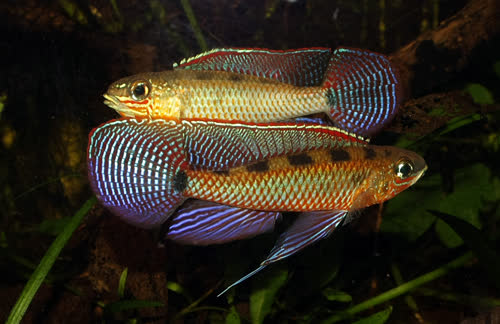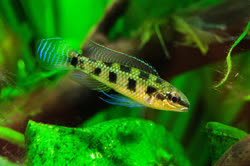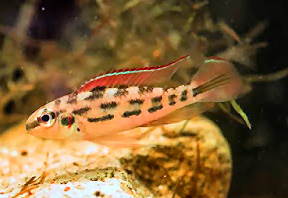The Checkerboard Cichlids

Dicrossus foirni
Crenicara maculata was known for years as the "Checkerboard dwarf cichlid" and had been in the hobby since the middle of the 20th century but in fact, many of these turned out to be filamentosum and true maculatum was fairly unknown and furthermore was not even Crenicara but Dicrossus.
In the years since then D. maculata has been rediscovered and three additional species in the genus have been found so far, others may yet exist still. Species descriptions for forms circulation in the hobby were published in 2008 and 2013 and now there are now a total five Dicrossusspecies known.
If one were to speculate it might be easy to imagine D. fiorni as the foundation stock here, as juvenile they have a checkerboard pattern which the females retain as adults as well. Males differentiate and the message is really "if you look like me, we're going to fight. The rest of you can get in with the rest there". D. forni adult males have a vague vertical barring. That there are other species that are smaller yet retain the juvenile color pattern is no shock really, if you don't look like an adult male you're less likely to be challenged by one it's a clever adaptation. This the basal stock split off into two ways: rounded tail and lyre tail. More than one species of each exists; it seems unlikely there are not more, great areas remain undiscovered.
D. fiorni reminds me of kribensis!
